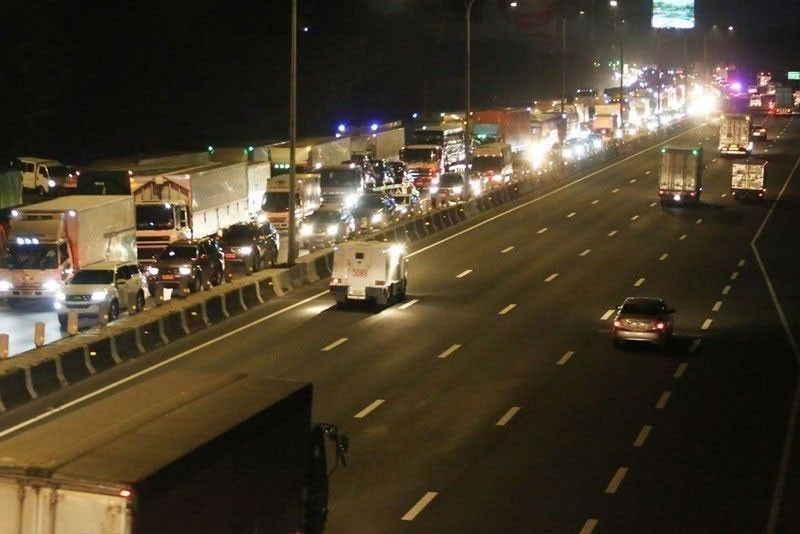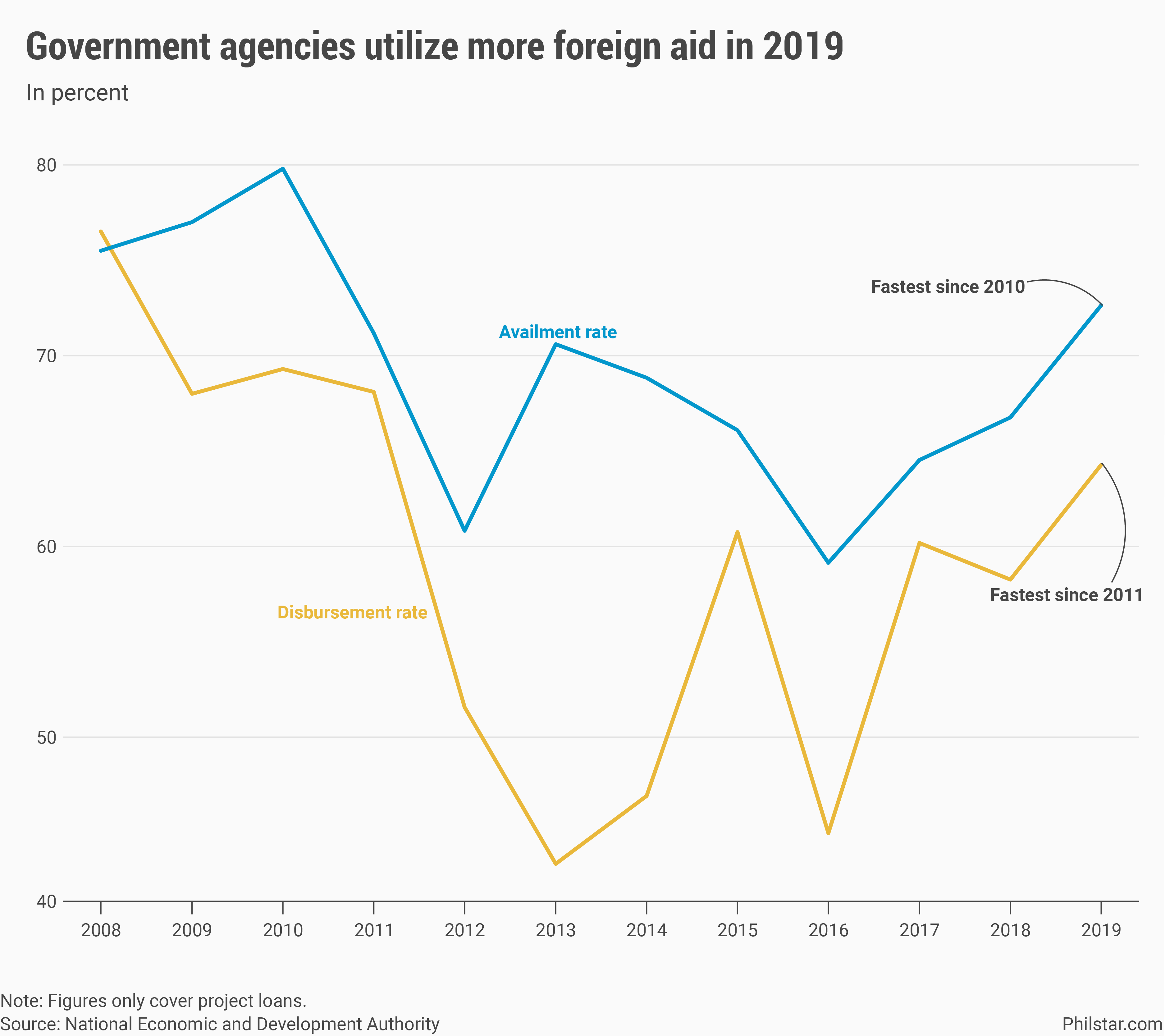Foreign aid spending hit 8-year peak but pandemic poses fresh hurdles

MANILA, Philippines — State agencies last year spent their foreign loans at the fastest pace in 8 years, a boost to the government’s infrastructure agenda heavily reliant on borrowed money but one that is now at risk of getting hampered anew by the pandemic.
A total of $2.71 billion in official development assistance (ODA) was disbursed last year by multilateral and bilateral partners to national government offices, up 21.4% year-on-year, according to a latest ODA report by the National Economic and Development Authority (NEDA).
Broken down, $1.21 billion in aid were in the form of project loans, up 69.3% annually and accounting for 64.28% of spending targets for the year. The “disbursement rate” was the highest since 2011.
Faster spending was welcomed by Acting Socioeconomic Planning Secretary Karl Kendrick Chua as proof that agencies, such as the public works and transportation departments notorious for project delays, are slowly improving their capacity to spend billions in funds typically found left idly sitting in government coffers.
“The recent loans portfolio performance showed improvements for the past two years. For 2019, all indicators of absorptive capacity improved,” Chua said in a statement on Monday.
When compared with ODA loans scheduled to be released last year, the performance of agencies also improved. A total of 72.64% of programmed ODA loans were availed last year, up from 66.76% a year ago and the largest availment made since 2010.
Higher take-up of foreign loans boded well for the Duterte administration’s “Build, Build, Build” infrastructure agenda that has depended on ODA for financing. Before the pandemic struck in March, 53 big-ticket capital outlays worth P2.5 trillion were up for ODA financing, a financing mix that has been under review since projects were reevaluated for viability due to the outbreak.

Indeed, the government’s review of infrastructure projects to push for programs nearing construction phase is signal building has taken a hit from the coronavirus disease-2019 (COVID-19) health crisis. “The momentum has been derailed by COVID-19, I believe,” Ruben Carlo Asuncion, chief economist at UnionBank of the Philippines, said in an online exchange.
Ibarra Paulino, executive director at Philippine Contractors Association Inc., an industry group that claims to account for 80% of state projects, agreed. “With different levels of quarantine restrictions and cost elements involved in restarting works, constructors and developers find it difficult to strike a common ground on how to proceed with the works avoiding disputes upon project completion,” Paulino said in a Viber message.
Japan still largest donor; China fifth
More broadly, NEDA report showed ODA signed last year reached $21.62 billion covering 352 projects. These include both funds already disbursed and those committed by donors but yet to be allocated to specific agencies.
Of the total amount, $19.97 billion was loaned out to 84 projects and will be paid with corresponding interest at various periods. A smaller $1.64 billion was free-of-charge grants to 268 projects.
By sector, funds for infrastructure accounted for 58% or $12.54 billion of the ODA portfolio. This was followed by money going to social reform and community development at $3.81 billion, while the balance of $5.26 billion was collectively shared by agrarian reform, governance and tourism and trade sectors.
By country source, Japan remained the Philippines’ top donor last year, accounting for 39.3% or $8.51 billion in aid funds. The Asian Development Bank and World Bank, multilateral agencies, followed with $5.71 billion and $4.31 billion, respectively.
South Korea was fourth biggest lender committing $630.57 million, while China ranked fifth with $590.35 million, NEDA report showed.
Asuncion said that with the pandemic, it is possible that some donors, preoccupied with battling COVID-19 in their own countries, held off from disbursing aid. “It may or may not. It’s hard to tell. It would be good to specifically look into each donor country,” he explained.
- Latest
- Trending
































